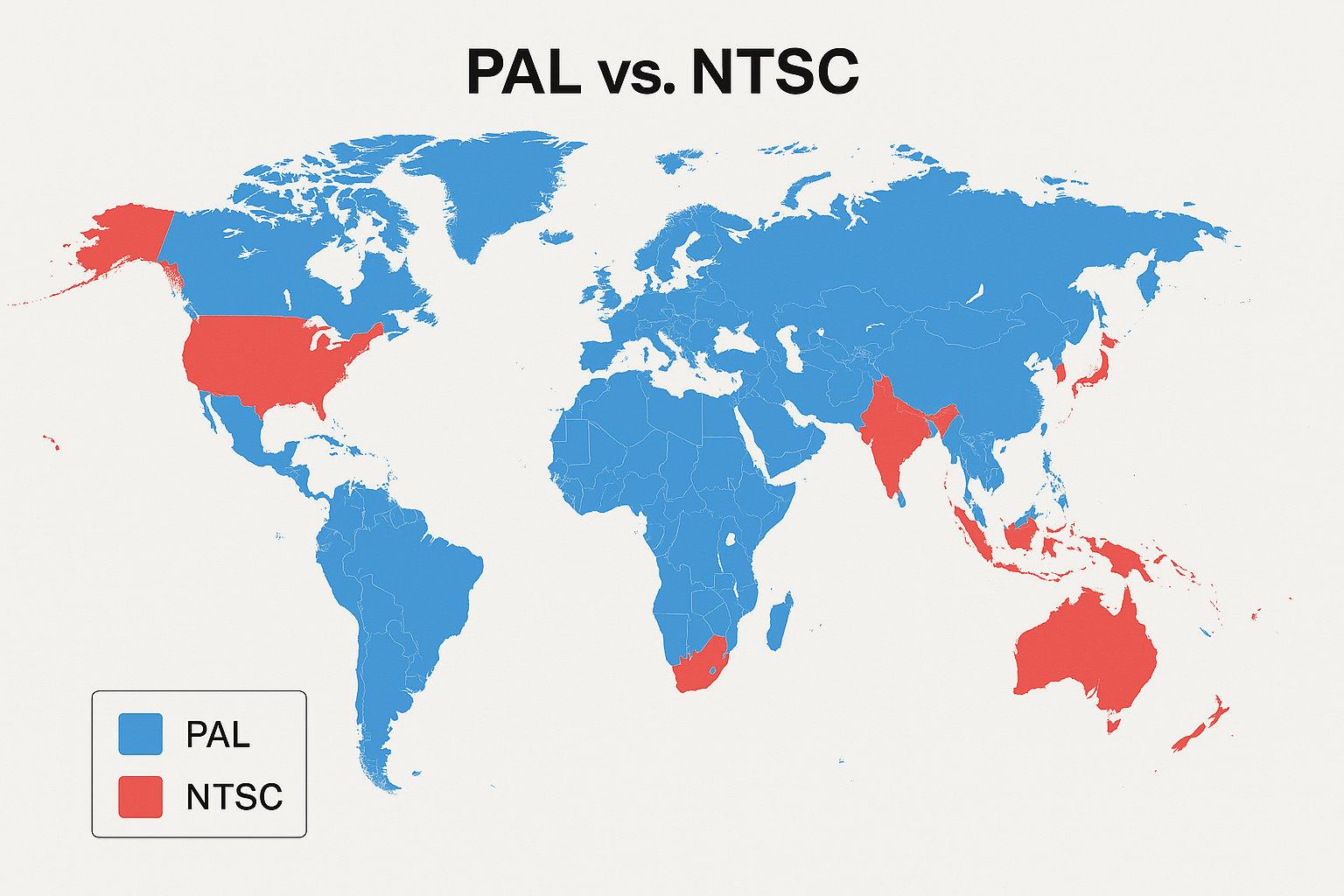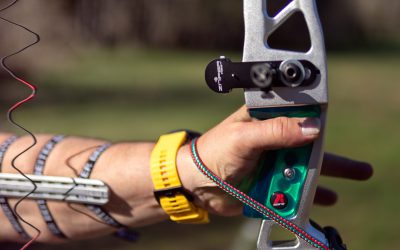Why your gorgeous footage flickers like a haunted house — and the embarrassingly simple way to fix it.
Scene One: The Café Myth
Picture this.
A small café, soft indie music in the background, two filmmakers deep in conversation. One stirs their oat milk latte and confidently proclaims:
”I always shoot in 24 fps. It just feels more cinematic.”
Their companion nods, as if this is a sacred truth handed down from Kurosawa himself.
And somewhere in the distance, a fluorescent tube begins to flicker.
Because — spoiler alert — that beloved “cinematic” frame rate might just be wrecking your footage. Not because it’s wrong. But because it’s wrong here.
The truth is that the PAL vs NTSC question isn’t about mood, or style, or “feel”.
It’s about electricity.
The Hidden Flicker: What Your Camera Sees (And You Don’t)
Electricity is the quiet puppeteer behind your lights.
In most of the world, it pulses at:
-
50 Hz – across Europe, Asia, Africa, Australia
-
60 Hz – in North America, parts of South America, Japan, and oddly enough… most ships
Now, most artificial lighting — especially older fluorescents, sodium vapour lamps, and budget LEDs — flickers at the same frequency as the mains supply.
Your eyes might not catch it.
But your camera? Oh, it notices everything.
Especially if your chosen frame rate or shutter speed isn’t in sync with the local frequency.
PAL and NTSC – Not Just Relics of the VHS Age
We toss these acronyms around like ancient runes, but they have practical consequences in modern digital filmmaking:
-
PAL (Phase Alternating Line) = 25 or 50 fps → designed for 50 Hz regions
-
NTSC (National Television System Committee) = 30 or 60 fps → designed for 60 Hz regions
These systems were born in the age of cathode-ray tubes and antennae, but they’re still incredibly relevant. Because flicker doesn’t care what sensor you have. It just wants to dance in your footage.
The Only Rule You Really Need
Match your frame rate to the local power frequency.
That’s it. That’s the secret sauce.
| If you’re in… | Choose: |
|---|---|
| Sweden, UK, Australia | 25 or 50 fps (PAL) |
| USA, Canada, Japan | 30 or 60 fps (NTSC) |
| Onboard a ship | 30 or 60 fps (NTSC) |
| Docked in another port | Check the country |
Like voltage, currencies, and plug shapes — your frame rate should travel with you.
But What About 24 fps?
Cue the dramatic music.
Ah yes, 24 fps. The beloved standard of cinema.
It’s talked about with the same reverence as vintage Leicas and French New Wave films. But here’s what many forget:
-
Most digital cameras don’t shoot exactly 24 fps.
-
They shoot 23.976 fps, a technical compromise from the early days of colour television.
-
It’s a workaround, not a wonder.
Back in 1953, when America added colour to its broadcasts, they couldn’t simply change the frame rate. So they nudged it down, ever so slightly, to 29.97 fps. And thus, 24 fps became 23.976 fps to keep things compatible.
Romantic? No.
Useful? Sometimes.
Safe in Europe under fluorescent lights? Absolutely not.
The Cinematic Trap: A Case Study in Flicker
You’re filming an interview in a school gymnasium.
Your Sony A6700 is dialled in at 24 fps.
You’ve framed the shot perfectly. Your subject looks magnificent.
Then you check the footage.
Flicker.
A subtle, ghostly shimmer in the background. The overhead lights — quietly pulsing at 50 Hz — have sabotaged your scene.
Because 24 fps doesn’t divide cleanly into 50.
And your shutter speed — likely set around 1/48 or 1/50 — is now clashing with the lights.
The result? A technical strobe that no LUT can cure.
Practical Advice for Real-World Shooters
Use 24 or 23.976 fps only when:
-
You’re shooting outdoors in daylight
-
You’re using high-end, flicker-free LED panels
-
You know what you’re doing
Otherwise, you’ll spend hours in post, trying to hide artefacts you could’ve prevented with a simple setting change.
- In 50 Hz countries, choose 25 or 50 fps.
- In 60 Hz regions, go with 30 or 60 fps.
Your audience won’t know the difference. But your footage will look cleaner, smoother, and entirely un-haunted.
What Happens When You Get It Wrong?
Your footage might suffer from:
-
Banding or rolling flickers across lights and screens
-
That odd, stuttery feel that makes movement seem… wrong
-
A subconscious sense that something is “off” — even if you can’t quite place it
And this can happen even if your camera cost more than your last holiday.
How to Set It Right (In Less Than a Minute)
Most cameras make it simple:
-
Go to System Settings or Video Settings
-
Set the Video System to PAL (for 50 Hz) or NTSC (for 60 Hz)
-
Choose a matching frame rate (25/50 or 30/60)
-
Adjust shutter speed to match:
-
1/50 for 25 fps
-
1/60 for 30 fps
-
1/100 or 1/120 for higher frame rates
-
That’s it. No plugins. No magic spells. Just respect for electricity.
Final Scene: Back in the Café
So next time someone says,
“I always shoot in PAL — it just looks better,”
take a sip of your now-cold latte, smile gently, and reply:
“Actually, it’s because your kitchen runs on 50 Hz.”
And in that moment — like a subtle rack focus — you’ll see the flicker fade, and the world make just a little more sense.






0 kommentarer